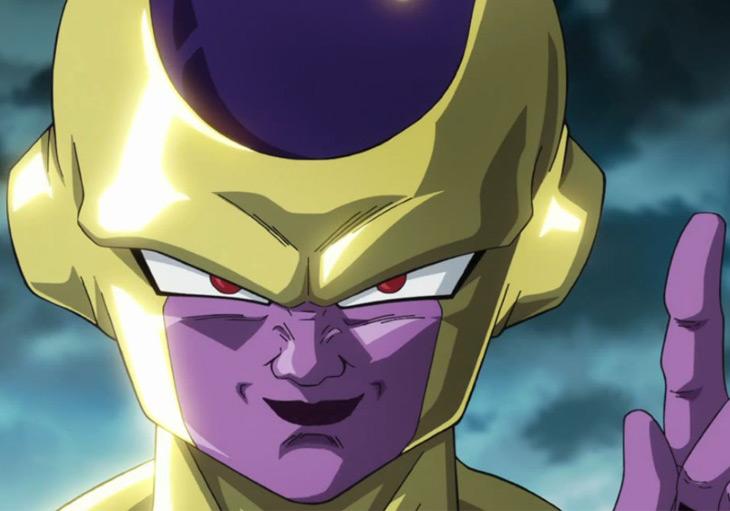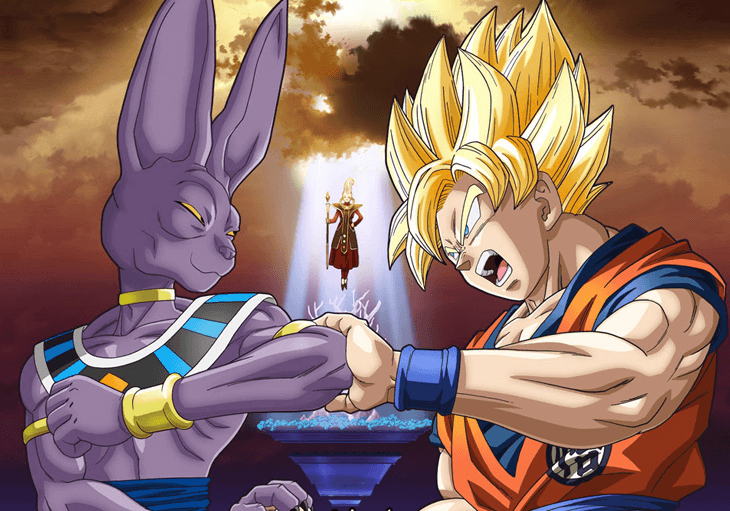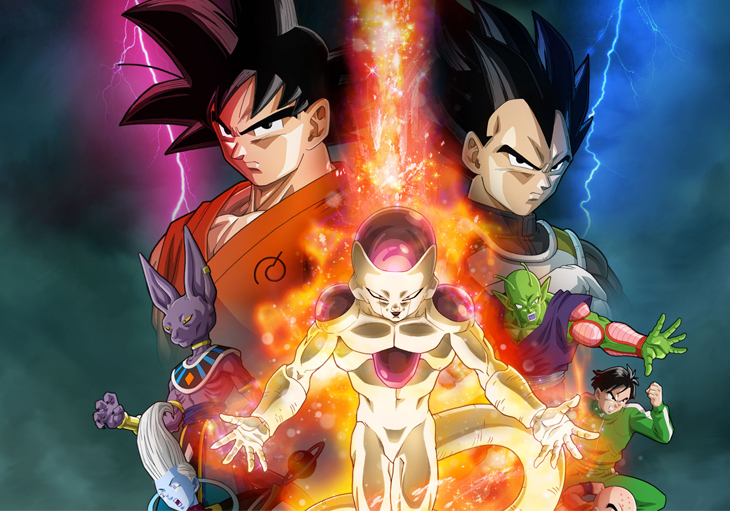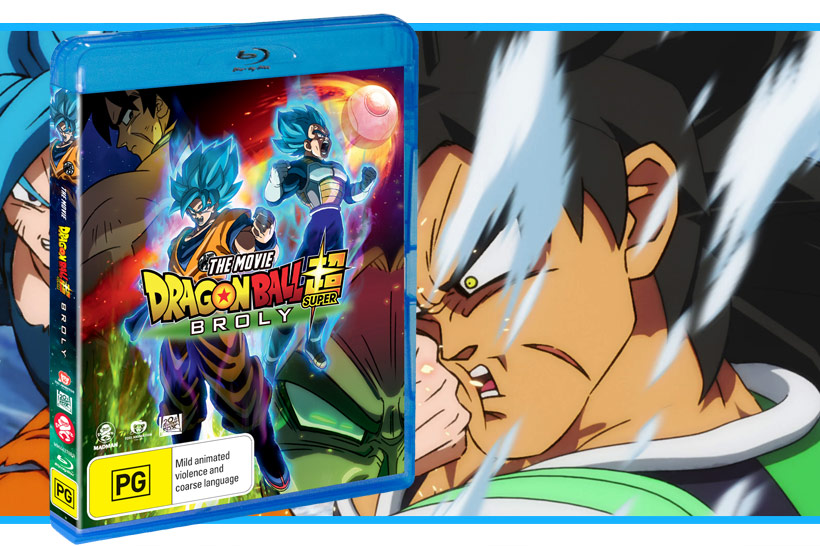When you think of Dragon Ball Z villains, one in particular probably comes to mind: Frieza. He’s the villain everyone loves to hate (I sure as hell did). So bringing him back in the latest big screen feature, Dragon Ball Z: Resurrection ‘F’, seems like a natural idea. It’s a fun, fast-paced action film, and the returning voice acting cast does a great job portraying the heroes of Earth. But by the end, I was left wanting something more.
Picking up some time after the events of Battle of Gods, the Earth is safe once more as Lord Beerus had decided to spare it (if only for the food). Of course, this calm is short-lived. The remnants of Frieza’s army show up and enact their plans to resurrect Frieza. Their plan is simple and quite smart: use the Dragon Balls (Since first watching the show, I wondered why so few villains of the series ever tried to use them).
Perhaps the strongest point of Resurrection ‘F’ is its choice of Villain. Frieza is a well known and developed character. If the film would have had a new villain, most of the movie’s relatively short 93 minute runtime would have had been spent establishing the main villain as a threat and fleshing out their backstory. With Frieza, there’s no need. If you know anything at all about Dragon Ball Z, you likely know who Frieza is and why he would want revenge on Goku. Once Frieza himself shows up, the connections to events that took place in that old story arc continue. I found it entertaining watching these sometimes subtle call-outs to events that took place so long ago.
Shortly after Frieza is brought back to life, we are treated to the large battle between his army and the heroes of Earth. The largely non-Saiyan fighters try to hold off Frieza’s assault, and it is delivered quite well. In fact, in my opinion, it is not Goku versus Frieza that is the highlight of the film; rather, it’s the battle between Frieza’s army and Gohan, Piccolo, Tien, Krillin, Master Roshi, and Jaco. In a good ten minutes of solid action, the small group fights across various kinds of terrain—using their brains as much as brawn against the overwhelming force. But more than that, it is a scene with some of the best animated fight choreography ever to show up on the silver screen – far from the repeated patterns of blurry punches made famous by DBZ on TV that I grew up with.
Something that irked me though was the rather typical and uninspired reason for when Goku isn’t around when things start to get heated back on Earth. We find out that Goku and Vegeta are on Beerus’s planet training with Whis, and this sequence, although brief, gives us some comedic exchanges between Goku and Vegeta, as well as an offhanded comment that becomes quite important later on.
Once Goku and Vegeta find out what is happening on Earth, they quickly find their way back and the true battle begins. The movie found an intelligent way of explaining how Frieza can hold his own against Goku who is far stronger now than when the two first fought back on Namek, and the fighting that ensues is very satisfying. The new transformations for Frieza and Goku are handled well, with the story explaining them in a way that makes sense in how they could attain these new powers. However, from what I remember in the series, new transformations were something rare – over the course of 291 episodes, only three major transformations were introduced. Now, we have had two in as many movies. It tends to rob much of what makes the transformations so special if they are thrown at us so readily. And also, let me just say, the blue hair does look pretty stupid.
However, the biggest flaw in Resurrection ‘F’ isn’t the aesthetics; it’s how Frieza is handled. Earlier, I said that using him as the villain for the film was one of its strongest points. However, it is how he is used that is the problem. While showing himself to be far stronger than Gohan, Frieza is never a real threat to Goku, even in his Golden Frieza form. He certainly gets his hits in, but Frieza never dominates in the fight through his own power. It’s only by outside interference that Frieza ever manages to get the upper hand – and even then an equally powerful and completely fresh Vegeta is waiting impatiently on the sidelines to finish off the battered and bruised foe.
Combined with the fact that he is never fully taken seriously by our protagonists, this in turn makes Frieza a weak villain. If the villain is clearly not as strong as the hero, the hero is in no danger of losing. If there is no danger, there is no tension – and without tension, it can nearly be impossible to get into the drama of action. And then there’s the ending.
The other reason it’s hard to get lost in the climatic battle of Resurrection ‘F’ is the obvious deus ex machina laid out in the film’s earlier segment – i.e. when Whis explains that he has the power to rewind time during his casual conversation with Vegeta and Goku on Beerus’s planet. Thus, even when Frieza does manage to get the upper hand, there is no tension with such an obvious way out having been foreshadowed. There are moments in Resurrection ‘F’ where, instead of doing something new, the film plays it very safe, sticking to the path well worn.
Dragon Ball Z: Resurrection ‘F’ is an enjoyable movie, and a nostalgic one from my perspective having grown up on the original Dragon Ball Z airing; however it is also somewhat flawed. While the first half of the film is filled with great action and comedy, the film loses its momentum once the main battle begins and the tension fades somewhat. In saying that, I was asked by a friend of mine to sum up the movie in one word, and I responded without question. Nostalgia. I felt that the movie brought the essence of the original Dragon Ball Z series back for me. So while I am in two minds over the flaws present in the film, overall, it was an enjoyable watch and I do still recommend Dragon Ball Z: Resurrection ‘F’, even if it is far from the grand return Dragon Ball Z’s most iconic villain deserved.
Tickets were provided by Madman Entertainment to the author for the purpose of this review.





